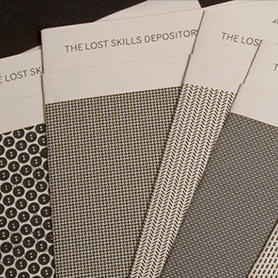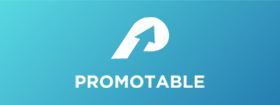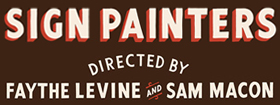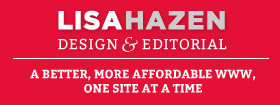Lottie Crumbleholme
Graphic Designer
Primary design concentration:
Print-based graphic design
Most preferred tool for designing:
I know everyone says “brain” for this question, for me, I’d add ears and eyes, because I think most importantly graphic design is about responding to things you see and hear. Oh, and my laptop comes in pretty handy too.
1. How and why did you choose to become a designer?
To be honest, I’m not really sure. When I was quite young I wanted to be a fashion designer, and then an architect, but I’m too much of a geek for fashion, and my surname is too ridiculous for a career in architecture. Then when I was about fifteen, I decided I wanted to be a graphic designer, but I’m from a small town in the South West of England, at this point, I’m pretty sure I’d never met a graphic designer, and had almost no idea what one actually did. I think it had something to do with the fact that, as a kid, I really liked stickers, paper, coloured pens, bubble-writing (an early 90’s phenomenon of writing words, often your own names, so that they look like bubbles), making people birthday cards and mucking around in an old copy of Corel Draw on my Dad’s computer.
2. Challenges you encounter as a designer and how do you deal with them?
I think the biggest thing is overcoming sometimes crippling self-doubt, I find the best way to deal with this is to talk with colleagues and peers and realise that pretty much all designers go through the same thing on a fairly frequent basis.
3. Your definition of an “elegant solution,” that is, good design?
From a graphic-design perspective, I think it’s something that is, in some way, original, is a good idea, that communicates well and is well-executed. Easier said than done.
4. From skills to values, what makes a designer successful?
I think this is a very personal thing and will vary so much between individuals. For some, it’s nailing that really clever and engaging way of communicating what might otherwise be a fairly dry and uninspiring message; and for others, it’s producing something that just looks really great, with a real sense of craftsmanship. And then, of course, for most, it’s producing this work for clients whose values are in-line with your own. I think I am almost certainly guilty of setting myself the utterly unachievable goal of wanting to achieve success on all these levels at once.
5. How do you stay motivated and grow personally and professionally as a designer?
By trying to remember to take breaks. This might be tea or coffee breaks whilst actually doing the work. But it can also be on a bigger scale, so for example, I’ve just finished a two-year Masters course, and am now going away on a 10-week break. The nature of the work is that you end up doing a lot of really long days and late nights, and I think we all have to remind ourselves to take proper breaks from time to time, because our work will always become better for it. In an ideal world, I’d rather produce less, but better, work than feel like I’m on some kind of design marathon constantly churning out mediocre work. Unfortunately, the need to earn money means that long stretches on the design treadmill are fairly inevitable for all of us.
6. For those aspiring to become a designer, whatever the discipline,what is your advice?
Learn from others, but try and focus your efforts on finding your own style, and your own way of thinking and working.
7. What is your quest in design?
I want to produce work that I can feel has had some sort of positive effect or performed a useful role.
Previous: Julie Oya | Next: Jaime Barrett

Support Design Feast via Patreon
This self-made project and its related efforts constitute a gracious obsession. The intention is to give a wholehearted and timely serving—as much as possible—of creative culture. If you gain a level of motivation, knowledge, even delight, from the hundreds of interviews plus write-ups here at Design Feast, and are able to contribute, please become a Patron with a recurring monthly donation. Thank you for your consideration!
Stay healthy and keep creating throughout the year!
Wishing you much success,
Nate Burgos, Content Creator & Publisher



Comments
There are no comments yet.
Leave Your Comment